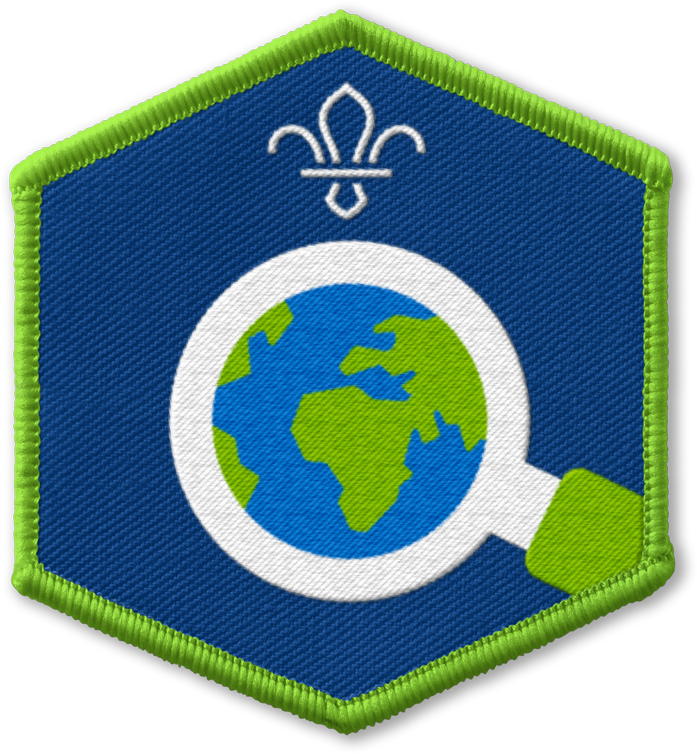
Flavours of the world
You’ll need
- Ingredients (see recipe)
- Paper cups
- Knives
- International foods
- Napkins
Before you begin
- Use the safety checklist to help you plan and risk assess your activity. Take a look at our guidance to help you carry out your risk assessment, including examples.
- Make sure all young people and adults involved in the activity know how to take part safely.
- Make sure you’ll have enough adult helpers. You may need some parents and carers to help if you’re short on helpers.
- Check for allergies, intolerances, fasting, food-related medical conditions, eating disorders, food sensitivities or dietary requirements, then adjust the food items used as needed. This may include making sure there’s no cross-contamination of packaging and no cross-contamination during the storage, preparation, cooking and serving.
- You may need to use separate chopping boards, equipment and utensils, such as tongs or toasters, for different dietary requirements, allergies and foods.
- If you’re unsure, check with the young person and their parents or carers. You can check with the adult directly if it’s a volunteer or helper.
- Some people may not like certain food textures or tastes and that’s OK. People don’t need to use all the ingredients if they don’t want to, and no-one should be made to try foods if they don’t want to. You can try to find an alternative for them.
- Take a look at our guidance on food preparation.
- You could run our kitchen hygiene activities before this session.
- Always have a hand washing station, washing hands regularly throughout this activity, and taking extra hygiene precautions when handling food. If you're using gloves to prepare food, treat them like your hands. Wash any gloves before using them and in between if necessary.
- Spray and wipe down all working surfaces and tables with anti-bacterial spray before and after use, and wash any equipment you’re using in hot soapy water.
- Take extra hygiene precautions when handling raw meat, such as regular hand washing.
- Keep raw and ready-to-eat foods separate, having separate equipment for raw and cooked meat, and washing up equipment as soon as it's been used.
- Make sure food is properly cooked before you serve it. Always cut through poultry and meat to make sure it's fully cooked, especially when barbecuing food. Make sure it's cooked slowly and thoroughly, and not just done on the outside.
- Always follow cooking instructions and never use food past its use-by date.
- Keep food out of the fridge for the shortest time possible.
- At the start of this activity, remind everyone of kitchen or indoor cooking safety rules and how to act safely. Always tie hair back, tuck in neckers and loose clothing, and wear closed toe shoes. Take a look at our kitchen safety tips.
- You may want to run a demonstration on how to use the equipment safely, such as for cooking or chopping ingredients. You could use our kitchen safety activities before this session.
- Make sure any cooking equipment or heat sources, such as ovens and hobs, always have adult supervision, including during free time and arrival times. If anyone struggles with sensing danger, you should consider providing extra adult supervision. This could be especially helpful at unstructured times, such as breaks or waiting to cook.
- Remind everyone to keep their fingers away from any knives. You may want to use blunt, child-friendly knives, or you could also have ingredients pre-chopped.
- If you’re using a gas stove, tabletop hob plates or a mini oven, make sure it’s on a stable heatproof surface and in a clear and open area, with plenty of ventilation. Gas appliances and sources can increase risk of carbon monoxide exposure. Take a look at our guidance on different cooking methods and carbon monoxide.
- You may want to put child-safe locks on cupboard doors to prevent access by young people, especially for cupboards containing matches, cleaning products or chemicals.
- People can work in small groups or as a whole group to bake or cook. Each group should have adult supervision.
- You may want to be in groups, but everyone to use the same cooking source, rather than having each group have their own.
- You may wish for groups to make or prepare the ingredients in a wider, more spacious area, then invite each group into the kitchen to cook one at a time.
- Remember the groups not using the kitchen or cooking will still need to be supervised, always following the Yellow Card.
- Make sure you have all the ingredients ready. You may want to pre-chop or pre-measure some activities.
Planning and setting up this activity
- For this activity, you’ll need foods from other countries. If you’re struggling for ideas, some options are:
- Croissant, madeleine cakes, brie, or camembert cheese from France.
- Pakoras, onion bhajis, or plantain chips from India.
- Kiwi fruit or pavlova from New Zealand.
- Manchego cheese, olives or tortilla (Spanish omelette) from Spain.
- Gather your foods and cut them into bite-sized pieces.
- Put each food in a different bowl (or on a different plate).
- Set out some cups and fill the cups with drinking water.
Running this activity
- Gather everyone together and explain that you’re going to be trying foods from all over the world. You could ask everyone what foods they’ve had before from other countries.
- Everyone should wash their hands.
- Give everyone a reusable plate and a cup of water.
- Give everyone the first food and see if anyone can guess what it’s called. Ask people to describe how it looks, how it feels to touch, and how it smells.
- If they want to, everyone should taste the food. Ask some people to describe what it tastes like and what its texture is like in their mouth, such as sweet, juicy, soft, or crunchy.
- You could talk about each food, and the country it comes from. Is it a surprising that the food comes from that country? What other foods come from that country?
- Now, everyone should take a sip of water to help get rid of the taste from their mouth, so they can try the next food.
- Keep going until the group has tried and talked about all of the foods.
Reflection
This activity helped to remind you that you’re a local, national, and international citizen. What food would represent your local area? How about your country? Which of the foods did you like the most? Do you think you’d like to visit another country and try the food there?
This activity was also a chance to try new things. Did you enjoy trying new things? How did you feel before you tried a food? What about afterwards? What made it easier to try new things—for example, did your friends encourage you, or did someone brave have a go first? Sometimes it can be scary to try something new, but when we give it a go it’s often not as bad as we think (even if it’s not our favourite). If you gave it a go and challenged yourself, well done!
Safety
All activities must be safely managed. You must complete a thorough risk assessment and take appropriate steps to reduce risk. Use the safety checklist to help you plan and risk assess your activity. Always get approval for the activity, and have suitable supervision and an InTouch process.
- Food
Remember to check for allergies, eating problems, fasting or dietary requirements and adjust the recipe as needed. Make sure you’ve suitable areas for storing and preparing food and avoid cross contamination of different foods. Take a look at our guidance on food safety and hygiene.
No one has to touch, smell, or taste anything they don’t want to. They can still describe how it looks (or touches or smells, if they want to), and they can predict the senses they don’t want to try. Friends who have tasted the food can describe what it’s like, so people can see if their predictions were right.
Make sure anyone with dietary requirements can try as many of the foods as possible.
All Scout activities should be inclusive and accessible.
Why not plan an international meal or evening, and cook or bring dishes to share? Parents or carers who have lived in other countries may like to join to talk to the group about food, culture, customs, and language. If everyone cooks, it could count towards their Cook Activity Badge or My World Challenge Award—we’ve included some recipe cards to give you some ideas.
Young people could vote on the countries they’d like to try food from. They could have a discussion or play a game. Some people might know lots about food from another country; they could share what they know with everyone else.




